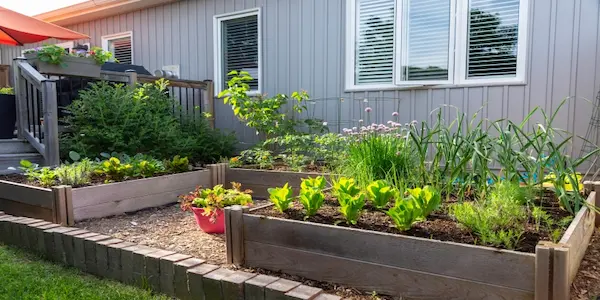Choosing the proper place for your raised garden beds is crucial for the success of your gardening endeavours. The location is significant in determining the amount of sunlight, soil quality, and accessibility, among other factors. This article will explore the key considerations and provide valuable tips on selecting the ideal spot for the raised beds for your garden.
Table of Contents
Assessing Sunlight Availability
Sunlight is necessary for the healthy growth of plants, making it essential to find a location that receives adequate sunlight. Observe your yard throughout the day to identify areas with the most sunlight. Your raised garden beds should be placed in a spot that receives at least six hours of direct sunlight. Avoid areas that are shaded by tall trees or buildings.
Evaluating Soil Conditions
Good soil is the basis of a thriving garden. Evaluate the soil quality in different parts of your yard to determine the best location for your raised beds. Look for well-draining soil that is rich in organic matter. Avoid compacted or sandy soil areas, as they may hinder plant growth. If the soil quality is poor, you can enhance it by adding compost or other organic amendments.
Considering Accessibility
Consider the accessibility of the location when choosing a spot for your raised garden beds. You’ll want easy access to your plants for watering, weeding, and harvesting. Ensure there is enough space around the beds to manoeuvre and work comfortably. Select a location close to a water source to make watering more convenient.
Analysing Microclimates
Microclimates are small variations in climate within a larger area. Different parts of your yard may have slightly different microclimates due to shade, wind, or nearby structures. Evaluate the microclimates in your yard and choose a location that suits the specific needs of your plants. For example, heat-loving plants may benefit from a sunny spot, while shade-tolerant plants thrive in a slightly shaded area.
Checking for Drainage
Correct drainage is critical for the health of your plants. Avoid areas with poor drainage, as excess water can lead to the rotting of roots and other problems. Look for locations where water doesn’t accumulate, or there are no signs of standing water after rainfall. If your yard has drainage issues, you can improve by incorporating raised beds and amending the soil with organic matter to promote better drainage.
Considering Wind Exposure
Strong winds can damage plants and affect their growth. Evaluate the wind patterns in your yard and choose a location that provides some protection from strong gusts. Consider placing your raised garden beds near fences, hedges, or buildings that can act as windbreaks. However, be mindful that these structures should not excessively shade the beds.
Assessing Proximity to Trees and Shrubs
While trees and shrubs can give shade and add beauty to your garden, they can compete with your plants for nutrients and water. Additionally, the roots of mature trees can extend far and may interfere with your plants’ root systems. Keep your raised garden beds far from large trees and shrubs to avoid these issues.
Considering Aesthetics
Lastly, consider the aesthetic appeal of the location. Raised garden beds can be visually appealing, so choose a spot that complements your overall landscape design. Consider how the beds will blend with the existing elements in your yard, such as pathways, fences, or other garden features.
Conclusion
Choosing the perfect location for raised beds for your garden requires careful consideration of sunlight, soil quality, accessibility, microclimates, drainage, wind exposure, proximity to trees, and aesthetics. By evaluating these factors, you can create an ideal atmosphere for your plants to thrive and ensure a successful gardening experience. Regularly assess the conditions and make any necessary adjustments to promote optimal growth and productivity in your raised garden beds. Happy gardening!

